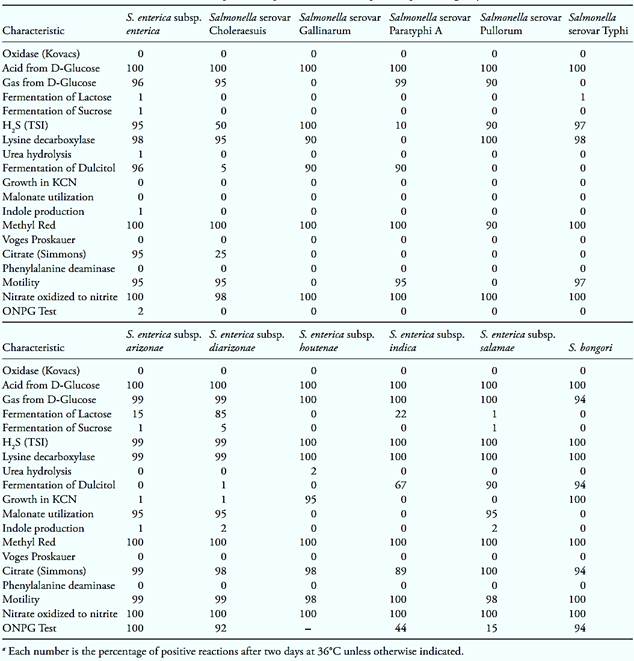Salmonella Biochemical Test Images : Salmonella Rapid Test - W81125 - Quicking (China ... - Diagnosing salmonella infection requires testing a specimen (sample), such as stool (poop) or blood.
Salmonella Biochemical Test Images : Salmonella Rapid Test - W81125 - Quicking (China ... - Diagnosing salmonella infection requires testing a specimen (sample), such as stool (poop) or blood.. Salmonella biochemical identification test kit. Method 1682 requires calculation of the mpn via. Diagnosing salmonella infection requires testing a specimen (sample), such as stool (poop) or blood. Isolates with a typical biochemical. Typhoidal salmonella refers to the specific salmonella serotypes which cause typhoid fever or paratyphoid fever, including typhi, paratyphi a, paratyphi b , and paratyphi c.
However, for a more detailed identification of salmonella, isolates are generally serotyped, especially for epidemiological investigations. Testing can help guide treatment decisions. Tetrathionate broth with brilliant blue. Not actual image of s. The diagnosis of salmonellosis requires bacteriologic isolation of the organisms from appropriate clinical specimens.

Feces, blood, or other specimens should be plated.
Isolates with a typical biochemical. If one tsi culture from 25 g analytical unit is classified as salmonella, further testing of other tsi cultures from the same 25 g analytical unit is unnecessary. Feces, blood and other tissues can be cultured on selective and nonselective media. However, for a more detailed identification of salmonella, isolates are generally serotyped, especially for epidemiological investigations. As an aoac official method of analysis, the. Learn vocabulary, terms and more with flashcards, games and other study tools. Microgen® salmonella test offers a rapid alternative to the traditional identification methods and detects salmonella spp. Biochemical tests presumptive colonies will be characterized using secondary biochemical tests: The antibodies bind to the target salmonella antigen to form a visually apparent immunoband indicating a positive test result. Typical salmonella colonies on selective agar plates could then be further analyzed by using biochemical, immunological, or molecular methods. The biochemical tests include sugar fermentation tests, decarboxylation and dehydrogenation reactions and hydrogen sulphide production. The names av the different subspecies of salmonella enterica should accordingly be: Start blog biochemical tests growth media terms images.
Laboratory identification of the genus salmonella is done by biochemical tests; Eliminates the need for conventional screening tests that require 24 hours incubation • based on. The biochemical tests include sugar fermentation tests, decarboxylation and dehydrogenation reactions and hydrogen sulphide production. The genus salmonella includes bacilli which parasitize the intestine of several vertebrates and infect human beings, causing enteric fever, gastroenteritis, septicemia with or without focal suppression and carrier state. However, for a more detailed identification of salmonella, isolates are generally serotyped, especially for epidemiological investigations.

Tetrathionate broth with brilliant blue.
Biochemical test of acinetobacter baumannii. Genus salmonella is determined through biochemical tests. Based on the biochemical tests above, salmonella can presumptively be identified. Isolates with a typical biochemical. Method 1682 requires calculation of the mpn via. Trouvez des images de stock de biochemical testing salmonella rack en hd et des millions d'autres photos, illustrations et images vectorielles de stock libres de droits dans la collection shutterstock. Typhoidal salmonella refers to the specific salmonella serotypes which cause typhoid fever or paratyphoid fever, including typhi, paratyphi a, paratyphi b , and paratyphi c. Microgen® salmonella test offers a rapid alternative to the traditional identification methods and detects salmonella spp. The biochemical tests include sugar fermentation tests, decarboxylation and dehydrogenation reactions and hydrogen sulphide production. The serologic type is confirmed by serologic testing. Testing can help guide treatment decisions. Tags biochemical test, biochemical test for salmonella typhi, microbiological test for salmonella, salmonella, salmonella typhi, salmonella typhi bacteria, salmonella typhi biochemical post navigation. Salmonella paratyphi growth on solid media like nutrient agar, blood agar and macconkey agar where as liquid medium, bhi broth and biochemical tests in triple sugar iron (tsi) agar, sulphide indole motility (sim) test, citrate agar and urea agar shown above picture.
Feces, blood, or other specimens should be plated. Feces, blood and other tissues can be cultured on selective and nonselective media. Salmonella typhi identification and its biochemical characteristics. Salmonella biochemical identification test kit. Typical salmonella colonies on selective agar plates could then be further analyzed by using biochemical, immunological, or molecular methods.

The biochemical tests include sugar fermentation tests, decarboxylation and dehydrogenation reactions and hydrogen sulphide production.
Check out some of the greatest microscopy images of all time. The names av the different subspecies of salmonella enterica should accordingly be: The genus salmonella includes bacilli which parasitize the intestine of several vertebrates and infect human beings, causing enteric fever, gastroenteritis, septicemia with or without focal suppression and carrier state. Testing can help guide treatment decisions. Salmonella typhi identification and its biochemical characteristics. While some of the infections can be easily treated, some of the strains have been shown to resist antibiotic treatment. Laboratory identification of the genus salmonella is done by biochemical tests; The antibodies bind to the target salmonella antigen to form a visually apparent immunoband indicating a positive test result. Learn vocabulary, terms and more with flashcards, games and other study tools. The test is performed with a loopfulof growth from nutrient agar plate or slope emulsified in two drops of saline on a clean slide. Salmonella paratyphi growth on solid media like nutrient agar, blood agar and macconkey agar where as liquid medium, bhi broth and biochemical tests in triple sugar iron (tsi) agar, sulphide indole motility (sim) test, citrate agar and urea agar shown above picture. The two species of salmonella are salmonella enterica and salmonella bongori. Typhoidal salmonella refers to the specific salmonella serotypes which cause typhoid fever or paratyphoid fever, including typhi, paratyphi a, paratyphi b , and paratyphi c.
Komentar
Posting Komentar